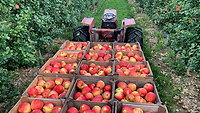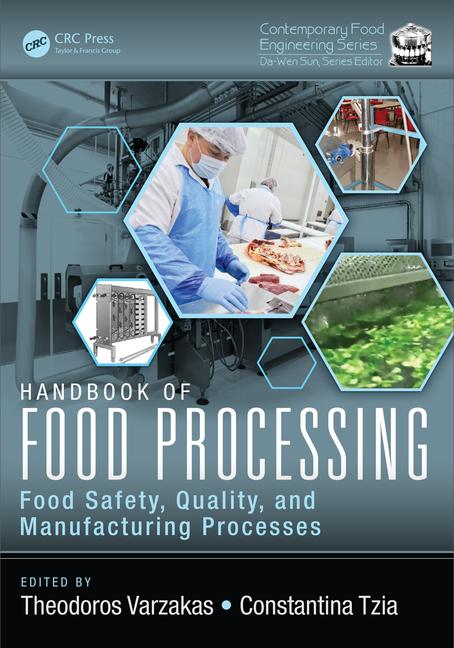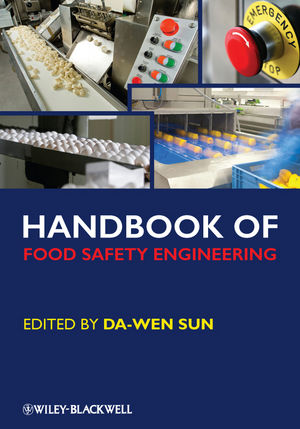Food Sanitizer Efficacy and Validation Overview

The food safety industry has focused heavily on sanitation through the growth of the Global Food Safety Initiative (GFSI) certifications and more recently the Food Safety Modernization act (FSMA). These efforts have intensified over the past 10+ years, resulting in the mandatory development of much more formalized programs, including programs for sanitation.
Background
FSMA’s sanitation requirements, both embedded and highlighted in the Section 117 Current Good Manufacturing Practices (CGMPs), came as a result of key findings by Eastern Research Group’s study in controls determined necessary to reduce the incidence of outbreaks in the U.S. The response to this, as well as continued food outbreaks, led to heavy requirements for sanitation management within the FSMA food safety plans, CGMPs, and preventive controls. In basketball terms, this equates to a “full-court press” when it comes to addressing sanitation in the food industry.
The sanitation requirements not only stress the environmental monitoring requirement, but also ensure that the plans include a qualified sanitation manager within food operations to oversee this critical area. (It should be noted that in previous years, industry has had a track record of eliminating such positions. More experienced internal sanitation managers were replaced with outsourcing to chemical supplier programs.)
Independently, FSMA has also set in motion significant increases in requirements for recorded evidence, including that effective sanitation be mandated within the supply chains of each food processor. Ultimately, each customer receiving product from another company must ensure that they meet the FSMA and customer sanitation requirements.
On top of this, the U.S. Food and Drug Administration (FDA) is very focused on swabbing for bacteria and other microbes and matching findings to the U.S. Centers for Disease Control and Prevention's PulseNet database. The database represents known strains of bacteria that can be identified by genome sequencing at the molecular level, linking past outbreaks to a new swab finding. This provides enough evidence of sanitation issues at a site for a criminal investigation by FDA.
The Issue: Outbreaks
Even with this increased emphasis and more stringent sanitation requirements, food outbreaks continue. Recent outbreaks in both the news and on the FDA website include the following:
• Escherichia coli contamination of ground beef from a major retailer
• Salmonella infections linked to pasta salad from a major regional grocery change
• A multistate Cyclospora outbreak from fresh salads at a leading fast food chain
• Crab meat imported from Venezuela due to Vibrio parahaemolyticus
• A multistate outbreak of Cyclospora linked to vegetables from a major processor
• Salmonella Mbandaka outbreak from cereal
• A multistate Samonella Adalaide from outbreak of pre-cut melons
What has gone wrong—or simply not right—to lead to these continued outbreaks? Some key question to ask include the following:
• What are the underlying reasons for the continued contamination and outbreaks?
• Have the root causes possibly been missed?
• Have better sanitation programs failed at “significantly reducing” the incidence of microbial contamination of the food supply?
• Have sanitation programs been improved but is a common cause still not fully addressed?
On the positive side, the physical evidence of sanitation programs is more heavily audited and tested than ever before. Additionally, the mitigation of corrective actions required by certification standards and the law leads to a sustained process to take actions, when necessary.
However, many sanitation programs are consistently lacking proper development, implementation, and management. Most have not been subjected to a complete review versus limited modification and/or are historically established programs that tend to evolve at a more deliberate (versus urgent) pace to prove compliance is met. Rarely is a complete review of sanitation programs and sanitizers conducted unless absolutely necessary. The challenges of cost control and limited resources continue to be an issue for much of the industry, leading to less aggressive steps. And the complexities of the types of bacteria and microbes just may be staying ahead of the of the higher sanitation standards.
Focus on Sanitizers
The adequacy of the sanitizers themselves is vital. Are they adequate to support the program’s ability to reduce or eliminate the level of microbial pathogen risk to safe levels? Have you assessed and approved your sanitizers based on their legally proven capability?
The use of ineffective and unverified sanitizer chemicals is a key issue not only for your operations, but for the entire supply chain—extending from growing to harvesting to pre-processing to washing to packaging to processing to final packaging to distributing to serving and to consuming. The quality and capability of the sanitizers being used for various food risks and operations are likely sources, leading to continued outbreaks in the market.
Greater emphasis must be placed on the sanitizers and their use. The sanitizer used must be proven effective at all levels of use, food products, and conditions. If not, the risk of microbial contamination will not be eliminated. The confidence level of your sanitizers cannot be overlooked—and many issues may impact their effectiveness, including the following:
• Proper selection for the food safety risk of the product/processes of an operation
• Proper selection and verification of the sanitizers approved for the operation type
• Safe storage, handling and control of sanitizers, as verified by sufficient testing
• Use factors, including water quality, especially for sanitizers requiring dilution of potency of metering systems
• Use of only sanitizer products that are in-specification to their registrations, approved use, and handling instructions
• Less effective sanitizers or dilutions to possibly reduce cost
• Bait-and-switch by chemical distributers of less potent sanitizers to increase sales and profits
• Any other factor of misuse or lack of full proper use of sanitizers
Validating and Verifying Sanitizer Efficacy
Many companies overlook the selection and approval of the right sanitizer for the intended use. This must include:
• A “fit” of the surface being sanitized, and
• The potential risk of the food products and environment.
When looking at the requirements for an approved sanitizer, it is critical to review the technical and use information. Be aware that in the U.S., approval of labels is highly regulated at the formula, use direction, and claim levels. Significant testing for validated and verified efficacy must be conducted prior to marketing a product labeled for food. This means the product is approved for sanitation of various microbials and specific surfaces. Food companies must ensure their chemical suppliers can prove the efficacy of the sanitizers they provide or recommend, or face the outcome of a failed sanitation inspection.
For these purposes, efficacy is defined as data showing that the pesticide is effective in controlling the pests for which control claims are made on the product label. Efficacy data are routinely required to be submitted to support products that control pests of public health significance, including but not limited to products to control pathogenic bacteria and viruses.[1]
Validation based on product use and both U.S. Environmental Protection Agency (EPA) and U.S. Department of Agriculture (USDA) require environmental and product testing that ensures the sanitizer product being used is effective:
EPA Regulations
EPA regulations outline the testing requirements for registered sanitizers for the food industry (typically hard surfaces that include disinfection, as well as sanitization). The approval for use by EPA and FDA requires registration (registered use, labeling, advertising)—providing and supporting testing that validates efficacy requirements.
For those products that fall under the Federal Insecticide, Fungicide, and Rodenticide Act (FIFRA) as hard surface sanitizers for food contact (without required rinse or requiring rinse based on development), testing and approval must be registered. Additionally, these products may include claims as cleaner, detergent, deodorizer, virucide, mildewstat, or fungicide. All may have a necessary application in controlling contamination in food processing.
The general requirements of approved and registered pesticides under FIFRA must be supported by an approved EPA registration number and from an approved EPA establishment. The approved labeling must include active ingredient statements, intended use (as described under background), manufacturing company and location, and use directions.
Efficacy is based on the registered active ingredient under FIFRA, while the manufacturing testing must follow the registered use, dilution, and delivery. The primary test information resides with the company and establishment manufacturing and distributing the registered active ingredient. Downstream manufacturers that must meet the same labeling requirement may repackage or reprocess the active ingredients into direct intended use products manufactured, according the technical and labeling information from the registered active ingredient manufacturer. The technical use and labeling information needs to reflect the registered active ingredient of the original manufacturer.
USDA Regulations
In addition, USDA may provide requirements for use of sanitizers that are not EPA-registered under programs for National Organic Programs. Up until 1998, USDA issued letters to confirm that the efficacy and labeling requirements were met according to the food use (sanitizer no-rinse/rinse). Products must be registered by a pesticide manufacturer of approved active ingredients that can be used in formulations of various dilution and delivery based on the intended use.
Comprehensive Process Review
Ultimately, the food supply chain is expected to have “fail-safe” sanitation at all levels. Legal requirements mandate proper sanitation though the entire supply chain and require processors to determine the risks within their operations prior to releasing products for the next level. Releasing product processed without mitigating these risks can fall under food fraud based on the current description of pure and unadulterated food.
FDA data have shown that inadequate sanitation exists in all types of food operations, including food processing, meat/protein, ready-to-eat, produce, foodservice, commissary, and retail. Our assessment of a broad range of food processing and handling operations further shows that virtually all have inadequate sanitation programs, even though they may pass audits on a regular basis. The lack of qualification of approved and registered sanitizers presents significant gaps. The quality and use of these sanitizers are weak areas when it comes to proper use and correct implementation of registered and approved products.
While many companies are starting to show improvement, most still have gaps when it comes to effectively meeting complete sanitation requirements. These companies, particularly organizations that have experienced outbreaks, need to conduct or commission a complete process review of their sanitation programs. This will serve to validate acceptable programs prior to audits and inspections.
Like quality, you cannot inspect in sanitation. Sanitation must be proven by scientific evidence that can be fully verified. The standards are in place to conduct a comprehensive process review and to take sanitation to new levels to significantly reduce the incidence of potentially lethal outbreaks.
Bill Bremer is a principal with Kestrel Management and leads the company’s food safety consulting group. Roberto Bellavia is a principal with Kestrel Management, where he manages food safety-related projects and supports clients of all sizes in developing and implementing GFSI schemes, complying with FSMA requirements, and creating supplier approval programs.
Reference
1. www.epa.gov/pria-fees/pria-glossary.
Looking for a reprint of this article?
From high-res PDFs to custom plaques, order your copy today!








